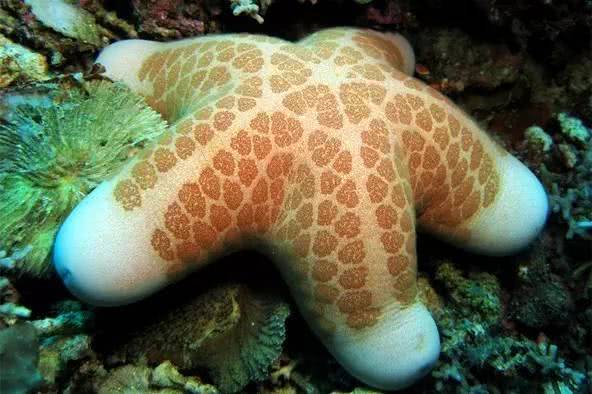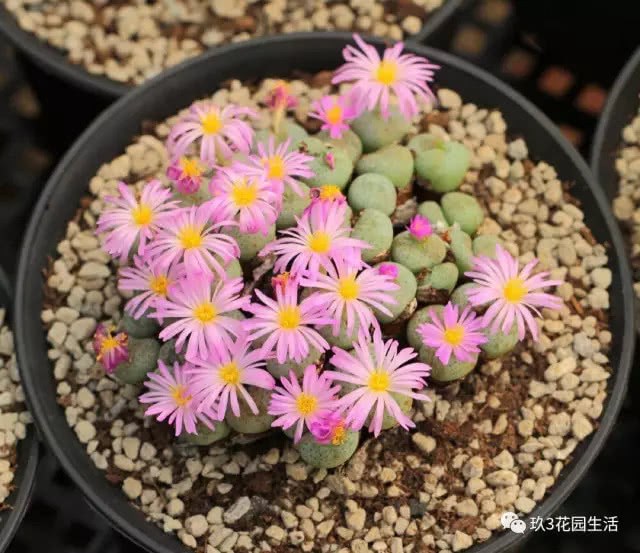Why does this star grow a little. Indescribable

The official account of Wechat has been revised, and everyone is setting "Little Star" for the official account that you like. A lot of friends said that the first time to send stars to the calendar Niang, happy! In return, Calendar Niang will give you this "star" at the bottom of the box today.
Starfish are widely distributed in the oceans all over the world, and they are of many kinds and shapes. The one that Calendar Niang wants to give you is laissez-faire and informal. It is Choriaster granulatus.
Oh, my God, look at that indescribable wrist.
Like all other starfish, granulomatous starfish is also an echinoderm, which belongs to the family Oreasteridae under the starfish class Valvatida. Its folly can be seen in the Indian Ocean, the Pacific Ocean and the Red Sea. It usually lives in shallow coral reef waters in tropical waters. Its body diameter can reach about 20 centimeters. It is a large and medium-sized starfish.
Granuloma, starfish. Picture: curiousokinawa.com
Granulomatous starfish has a smooth surface without verrucous processes and spines. It is slightly raised and has fine-grained skin Gill, which has the function of respiration and excretion, which is the origin of its Chinese name.
Granulomatous starfish's body consists of a central body disc and five radiating wrists, thick and plump, like both a comfortable pillow and a pile of soft dough, hence the English names "cushion seastar" (pillow starfish) and doughboy star (dough starfish).
There are dark skin gills with fine particles. Picture: fineartamerica.com
Granuloma starfish's five indescribable wrists are the quintessence of its shape. Its wrist is short and thick, the end of 1/4 is not covered by the skin Gill, the top is round, and the stripe groove in the center of the ventral surface extends upward. From a human perspective, the magnificence of these five wrists is like the battle of the five armies, which makes people imagine, so it has the Japanese common name of "five times a night" (heavy fog). As for people jokingly calling it "Gu Juji" and "Takeshi Kaneshiro", I don't seem to know what they are talking about.
Those five indescribable wrists. Picture: basdiving.com
The prototype of Patrick Star in the American cartoon SpongeBob is likely to come from granuloma starfish. In the play, the fat pink starfish is always inseparable from SpongeBob. It has big nerves and well-developed limbs, and often makes trouble for everyone. It is a loyal fan of the Crab Castle King and SpongeBob's best friend. Whoo, it seems that I finally know why SpongeBob is covered with holes (cover his face).
The sea baby and the pie star. Picture: SpongeBob
A quiet hunter at the bottom of the sea
Starfish rest quietly at the bottom of the sea, their silent appearance is quite different from the image of their usually greedy predators in the ocean. Like most starfish, the calcareous bone plates of granulomatous starfish are so hard that their wrists can only bend slowly, so their movement mainly depends on the "plumbing system".
Granuloma, the tube foot of a starfish. Picture: curiousokinawa.com
There is a groove in the middle of the ventral surface of the wrist, which usually has several rows of tubule feet with suckers, which are soft and elastic, can swing back and forth and grasp objects, and have finger-shaped liquid sacs at the base, which are filled with liquid and communicate with the whole body to form a water pipe system.
In short, starfish can control local muscle contraction through the nervous system to support and move the body through these "hydraulic tubule feet." the starfish's wrist is radiant, so there is no front and back distinction between the body and the body. Any wrist can act as a vanguard, moving in any direction at any time, moving at least 5 centimeters per minute.
Granulomatous starfish developed plumbing system. Picture: curiousokinawa.com
Granulomatous starfish usually feed on molluscs, coelenterates and corals. when they hunt, they find their prey through the tactile and olfactory functions of tube feet, and when they find their prey, they hold their prey tightly with their stout wrists. or pull open the shell of the prey with the aid of a tube-foot sucker, and then spit out the cardia and stomach around the carnal part of the prey and begin to digest and absorb, sometimes even pushing the stomach into the closed bivalve gap of shellfish. This amazing stunt allows starfish to prey on much larger prey.
Hold on tight. Picture: wetwebmedia.com
Dafa snail is coming. Run.
Granuloma starfish will encounter many natural enemies in its life, such as seabirds, sea otters and so on. Of course, there is also a big enemy from the bottom of the sea, which is the famous Charonia tritonis.
C. tritonis). Picture: genuine 123rf picture
The snail is a huge conch with a shell that can grow up to nearly 60 centimeters. It is one of the largest molluscs in the coral reef area. Its favorite food is starfish.
Like most starfish, granuloma starfish detach their caught wrists in times of crisis when they encounter predators, but their wrists have a strong ability to regenerate and will soon grow back.
The snail is preying on starfish. Picture: norbertwu.com
The snail also preys on Acanthaster planci, which is the archenemy of coral reefs compared to sarcoidoma starfish. They can firmly crawl on corals, turn their stomachs out and cover them, while secreting a large amount of digestive juice to seep into the pores of coral calcareous bones, turning delicate corals into a nutritious "delicious meal". Each spike-crowned starfish eats about 15 square meters of coral tissue each year. The spiny-crowned starfish is covered with poisonous thorns, and the snail is almost its only natural enemy.
Granuloma starfish on coral reefs. Picture: casc.it
The thorn-crowned starfish are preying on corals. Picture: Michele Westmorland / Animals Animals
Unfortunately, in many countries, the French snail is still traded as a beautiful ornament. Human beings catch a large number of snails, so that the number of natural enemies of thorn-crowned starfish becomes smaller and smaller; coupled with the overfishing of fishery resources, some fish that prey on spinous-crowned starfish larvae are reduced.
Thorn-crowned starfish have a very strong reproductive capacity, laying more than 100000 eggs at a time, and can mature and reproduce in less than two years. The surging spinous-crowned starfish will bring serious disaster to coral reefs, like a coral plague.
The snail that has just been caught. Picture: natgeocreative.com
This article is a 2017 article on species Calendar, from the author of species Calendar @ Salmon.
Soft calendar Niang, changing stars online ~
Do you like this "star" of Li Niang?
Remember to leave your stars before you go!
If not, open the "…" at the top right of the main page of the official account. Button, select "set as a star"!
- Prev

Today, I'll show you how the seven slow sheep on the tree got into the tree.
I don't know if you remember, in my previous species calendar, I used to raise donkeys when I was a child. This time, let's switch to another animal and talk about Capra aegagrus hircus. I didn't have a goat when I was a kid. I live next door.
- Next

How to classify succulent plants according to their shape
Compared with succulent plants, we should be more familiar with them now, but we all know that there are many varieties and forms of succulent plants. So today we will look at what are the most common according to the form of succulent plants.
Related
- Wuhan Hospital Iron Tree Blooming Result Was Instantly Frightened by the Gardener Master
- Which variety of camellia is the most fragrant and best? Which one do you like best?
- What is the small blue coat, the breeding methods and matters needing attention of the succulent plant
- Dormancy time and maintenance management of succulent plants during dormancy
- Minas succulent how to raise, Minas succulent plant pictures
- What are the varieties of winter succulent plants
- How to raise succulent plants in twelve rolls? let's take a look at some experience of breeding twelve rolls.
- Attention should be paid to water control for succulent plants during dormant period (winter and summer)
- Watering experience of twelve rolls of succulent plants
- Techniques for fertilizing succulent plants. An article will let you know how to fertilize succulent plants.

